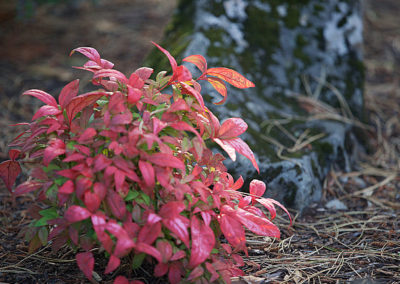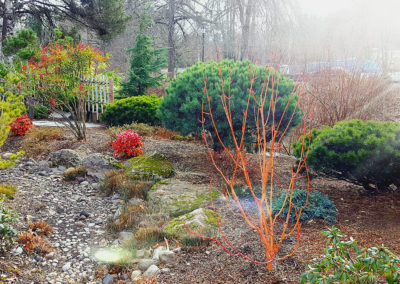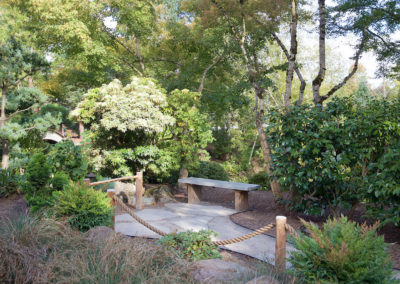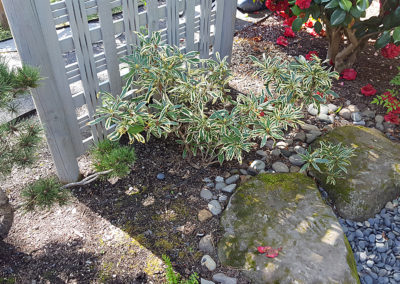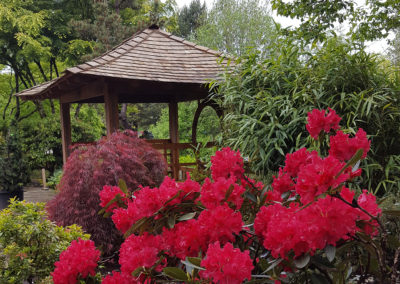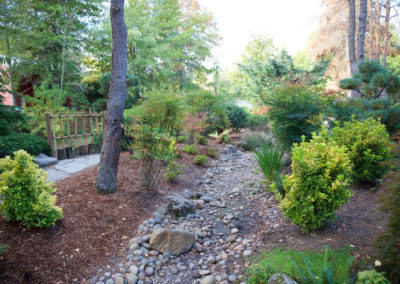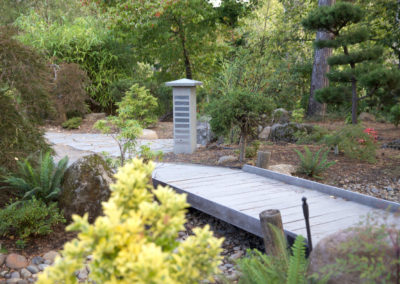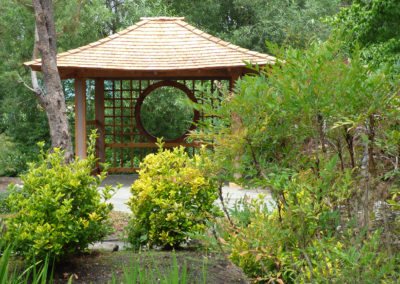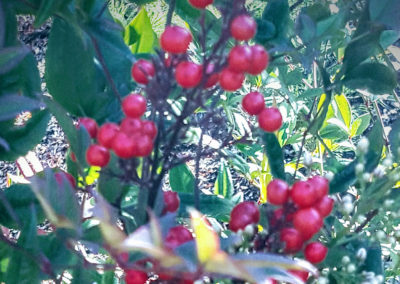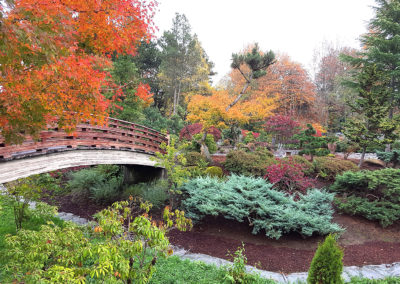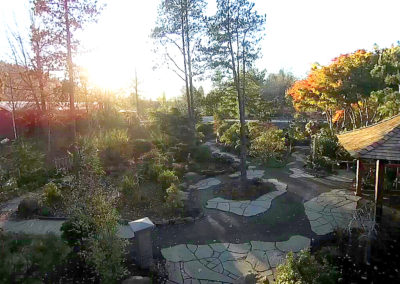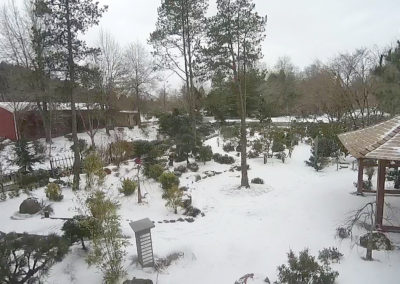The garden can be used for many things by many people and each person is drawn to this place by certain characteristics or combination of characteristics that they enjoy. Those individuals that come might be accompanied by someone, however once they are there they become apart and enter into minds privacy. Many times we will find people who stop by with others, come back alone to enjoy the offerings.
Many assets alone or combined, draw the interest of the guest at Tsuru Island and those all have to do with smells, texture, balance, sounds and color. The colors are many times used to attract or distract ones attention while sitting in or walking through the garden. Using the brilliance of the color especially in the winter will draw your attention away from other elements of interest until they are eventually seen.
The selection of plants can allow the change of color and/or texture as the months pass, while some plants will change with each quarter of the year and noticeably if one is paying attention. Some species will bloom at certain times of the growing season and of course they do not always bloom during the same week or month, weather and current climate conditions will have an effect. We find that by selecting a balance of plants that bloom, we can carry that interest from mid February and onto August.
Those plants that bloom are only part of the picture because we can see the color changes on the plant before and after it might bloom, usually the newer growth will be lighter in color and maybe a bit shinier. Which takes us to the selection of plants that have naturally shiny leaves that will draw ones eye, the camellia and cherry laurels are examples.
Not all colors provided by plants come from the blooms, it comes from the bark, the leaves or needles, new growth until hardened off and certainly in the fall we wait with anticipation for the leaf color changes of the trees. Some types of trees are grown specifically for the brilliance of the leaves in the fall months. The challenge continues on for growers and developers to figure out how to get the colors even more spectacular and to last longer with all of those reds, yellows and oranges.
We also have to remember that part of the presentation of color has to do with the elements around the plants, close in or far away. What I am referring to is the texture of stone, the brightness of moss, the color and texture of the walking surface and the diversity of the bark on the trees and how it all blends as the result of the guidance from nature.
So when coming to the garden and you see the leaves and needles on the ground, remember that it allows another opportunity to see the continued effect of color, it is part of the process, just color on the ground to enjoy.

